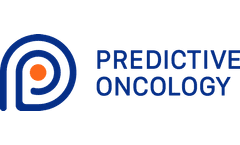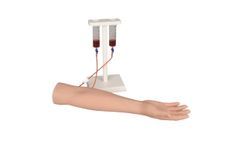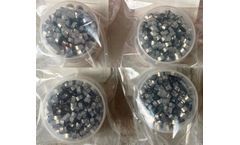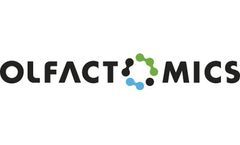- Home
- Articles
Refine by
Medical Industry Articles & Analysis: This-Year
176 articles found
Chitosan is a natural, biodegradable polysaccharide derived primarily from the shells of shrimp, crabs, and fungi. Due to its biocompatibility, antimicrobial properties, and film-forming capabilities, chitosan is widely used in food preservation, water treatment, cosmetics, agriculture, and biomedical applications. 1. What is Chitosan? Chitosan is produced by the deacetylation of chitin, a ...
ByMatexcel
In the realm of genetic engineering and genome editing, single guide RNA (sgRNA) plays a pivotal role, particularly in the context of CRISPR-Cas9 technology. The effectiveness of CRISPR-Cas9 hinges largely on the design and confirmation of sgRNAs, which direct the Cas9 protein to specific genomic locations. This article delves into the key aspects of designing sgRNAs, the methodologies involved ...
Introduction The BALB/C mouse is a widely used inbred strain in biomedical research, particularly in the fields of immunology, cancer research, and genetics. Among the various tissues studied, the kidney holds significant importance due to its complex structure and multifaceted role in physiological functions. A formalin-fixed paraffin-embedded (FFPE) block of the BALB/C mouse kidney serves as an ...
The rat thymus, an essential organ in the immune system, plays a crucial role in the development and maturation of T-cells. Investigating the thymus of rats provides valuable insights into immunological processes and disease mechanisms. One of the most effective methods for preserving and studying the cellular architecture of the rat thymus is through the use of Formalin-Fixed Paraffin-Embedded ...
Adenocarcinoma of the breast represents a significant subset of breast cancers, characterized by the malignancy of glandular tissues. This specific article focuses on the right medial segment, highlighting its histopathological features, diagnostic methods, and potential therapeutic avenues. Overview of Adenocarcinoma Adenocarcinomas in the breast typically arise from the epithelial cells lining ...
Many oncology drugs have been abandoned by pharmaceutical companies due to poor performance in phase I, II, or III clinical trials. These drugs represent untapped potential treatments for indications outside of those initially investigated. With research and development costs for a single new drug estimated between $2–3 billion, abandoned drugs represent an opportunity to bring drugs to ...
The home healthcare market is experiencing rapid growth as patients seek more convenient, comfortable care outside of hospitals. Whether managing chronic conditions, receiving post-operative care, or utilizing wearable medical devices, patients and providers alike demand medical components that are safe, reliable, and effective in non-clinical settings. Fluoropolymer tubing—PTFE, PFA, and ...
Summary When it comes to surgical precision, most surgeons know the value of excellent loupes and proper ergonomics, but lighting often gets overlooked. And yet, the right lighting setup can make a noticeable difference in clarity, comfort, and even surgical outcomes. Here are two simple but powerful lighting tips that are easy to implement and surprisingly ...
In surgical tissue recovery, focus is on controlling infection, managing inflammation, and ensuring wound closure. Beneath the surface—anatomically and biologically— the extracellular matrix (ECM) is undergoing remodeling ensure long-term tissue integrity. The ECM is a dynamic, biologically active network that orchestrates the entire process of tissue repair, remodeling, and ...
When you're just starting out in the world of healthcare, whether as a nursing student, medical trainee, or phlebotomy learner, few things feel as nerve-racking as your first needle insertion. You've read the textbooks, watched the tutorials, and maybe even practiced on an orange or a banana, but when it comes to human skin, confidence often lags behind theory. This guide is for you - the ...
In the intricate world of cellular biology, proteins are the undisputed workhorses. They are assembled based on a genetic blueprint, but their story doesn't end there. After synthesis, proteins undergo a vast array of chemical modifications known as post-translational modifications (PTMs). These changes act as molecular switches, fine-tuning a protein's function, localization, and stability. ...
ELANE, or neutrophil elastase (NE), is a serine protease stored in the azurophilic granules of neutrophils and is encoded by the ELANE gene on chromosome 19. It plays a pivotal role in the host defense system by degrading bacterial proteins, remodeling extracellular matrices, and shaping inflammatory responses. However, the same proteolytic activity that protects against pathogens can, when ...
When you hear the word "sterol," your mind probably jumps to one famous, and often misunderstood, molecule: cholesterol. We’re constantly bombarded with messages about "good" and "bad" cholesterol, and its impact on our cardiovascular health. But what if I told you that cholesterol is just one member of a vast and vital family of molecules called sterol lipids? This diverse group is ...
In the bustling city of the cell, proteins are the tireless workers. They build structures, carry messages, and catalyze the chemical reactions essential for life. But a protein's job isn't static. Its function, location, and even its lifespan are tightly controlled by a series of modifications. Among the most versatile and critical of these is Protein Ubiquitination, a process that acts like a ...
Matrix Gla Protein (MGP) is a small, vitamin K-dependent extracellular matrix protein that plays a critical role in the regulation of vascular calcification and bone development. As a natural inhibitor of pathological mineralization, MGP has attracted significant attention in cardiovascular and skeletal biology research. The development of recombinant MGP protein has enabled researchers to study ...
Medical technology has seen remarkable advancements over the years, and radiopaque marker bands are among the innovations that have revolutionized the precision and safety of procedures involving medical devices. As a critical component in many medical instruments, these small yet highly effective devices ensure that surgeons and healthcare professionals perform accurately in high-stakes ...
Population growth, aging populations and increases in cancer incidence have necessitated new approaches to identifying effective treatments. One such approach involves the repositioning, or repurposing, of drugs already FDA approved in either non-oncology disease states and/or approved in a limited number of tumor types. The repurposing of these drugs for new indications represents an ...
A paper on the detection of phospholipids from skin via DMS has been published! The IonVision system was tested with porcine skin, and then further refined to analyze a small number of human basal cell carcinoma and healthy skin samples. The classification accuracies achieved (over 90 %!) encourage us to plan studies with a larger number of skin samples. The research article is available as ...
Virus-like particles (VLPs) have garnered significant attention in recent years for their potential applications in vaccine development, drug delivery, and as tools in various biotechnological fields. These nanoparticles mimic the structure of viruses but lack the viral genetic material that makes viruses infectious. This unique characteristic offers a versatile platform for various innovative ...
Human ovarian epithelial cells play a crucial role in ovarian function and have become a significant focus in cancer research, specifically ovarian cancer. The ability to study these cells in a laboratory setting has been greatly enhanced through the development of immortalized human ovarian epithelial cell lines, particularly those that utilize the SV40 (Simian Virus 40) large T antigen. ...












